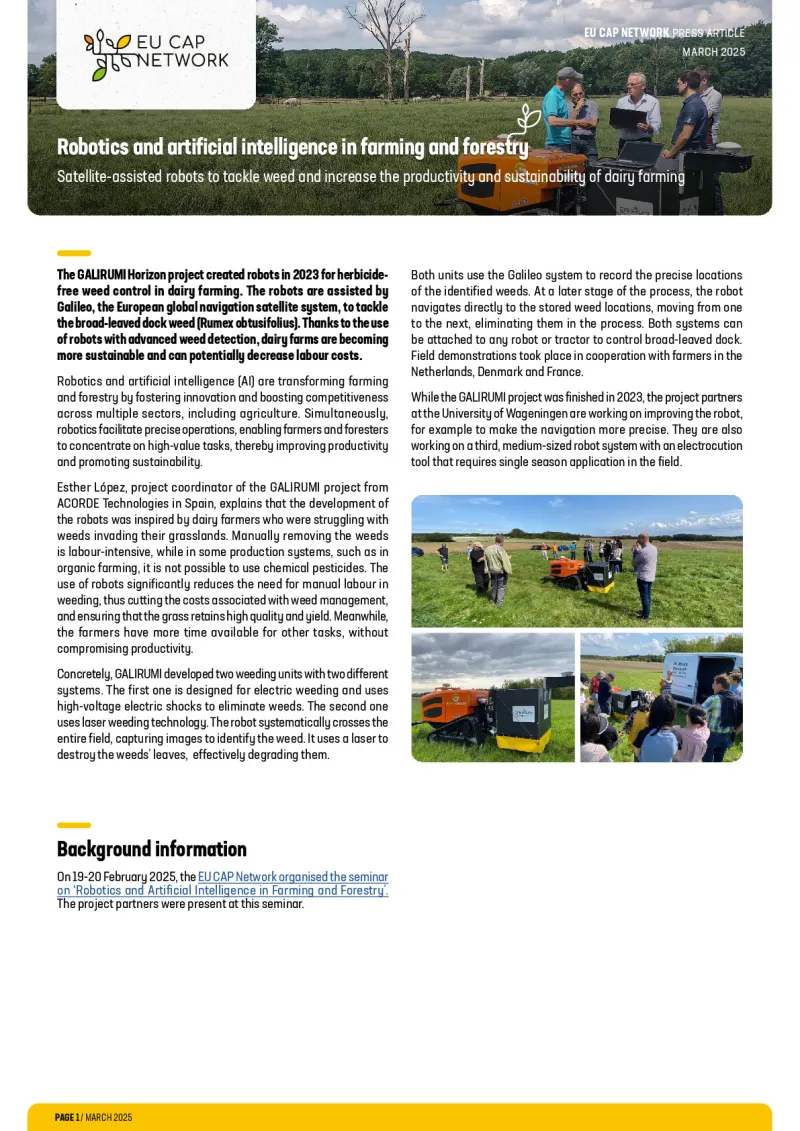Robotics and artificial intelligence in farming and forestry
- Innovation, knowledge exchange & EIP-AGRI
- Agricultural Productivity
- Research & Innovation
- Digitalisation
- Fostering Knowledge & Innovation
Satellite-assisted robots to tackle weed and increase the productivity and sustainability of dairy farming.
- 2023-2027

The GALIRUMI Horizon project created robots in 2023 for herbicide-free weed control in dairy farming. The robots are assisted by Galileo, the European global navigation satellite system, to tackle the weed Broad-leaved dock (Rumex obtusifolius). Thanks to the use of robots with advanced weed detection, dairy farms become more sustainable and can potentially decrease labour costs.
Robotics and artificial intelligence (AI) are transforming farming and forestry by fostering innovation and boosting competitiveness across multiple sectors, including agriculture. Simultaneously, robotics facilitate precise operations, enabling farmers and foresters to concentrate on high-value tasks, thereby improving productivity and promoting sustainability.
Esther López, project coordinator of the GALIRUMI project from ACORDE Technologies in Spain, explains that the development of the robots was inspired by dairy farmers who were struggling with weeds invading their grasslands. Manually removing the weeds is labour-intensive, while in some production systems, such as in organic farming, it is not possible to use chemical pesticides. The use of robots significantly reduces the need for manual labour in weeding, thus reducing the costs associated with weed management, and ensuring the grass retains high quality and yield. Meanwhile, the farmers have more time available for other tasks, without compromising productivity.
Concretely, GALIRUMI developed two weeding units with two different systems. The first one is designed for electric weeding and uses high-voltage electric shocks to eliminate weeds. The second one uses laser-weeding technology. The robot systematically traverses the entire field capturing images to identify the weed. It uses a laser to destroy the leaves of the weeds, effectively degrading them.
Both units use Galileo to record the precise locations of the identified weeds. At a later stage of the process, the robot navigates directly to the stored weed locations, moving from one to the next, eliminating them. Both systems can be attached to any robot or tractor to control Broad-leaved dock. Field demonstrations took place in cooperation with farmers in the Netherlands, Denmark and France.
Please feel free to use this press article and the pictures to inform other colleagues or to use in your own publications. If you would like to receive press articles directly, please fill in the subscription form.